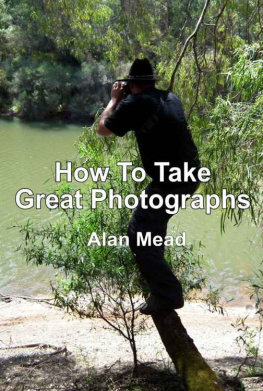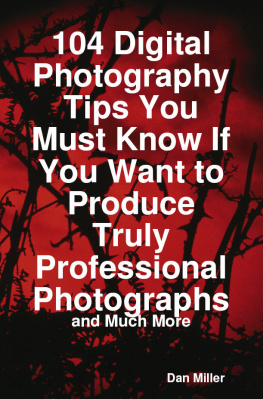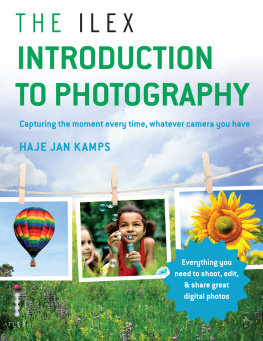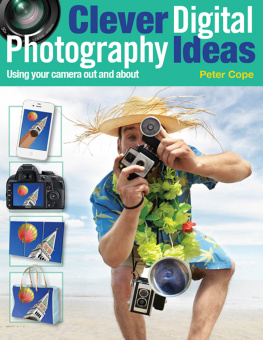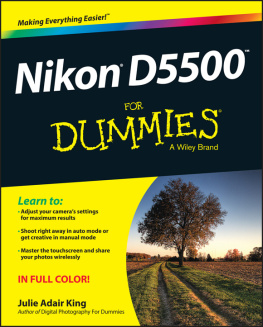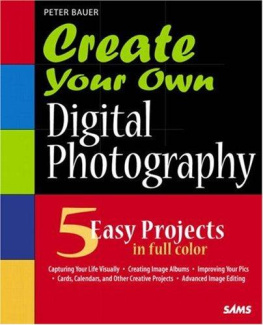Alan Mead. - How To Take Great Photographs
Here you can read online Alan Mead. - How To Take Great Photographs full text of the book (entire story) in english for free. Download pdf and epub, get meaning, cover and reviews about this ebook. genre: Art. Description of the work, (preface) as well as reviews are available. Best literature library LitArk.com created for fans of good reading and offers a wide selection of genres:
Romance novel
Science fiction
Adventure
Detective
Science
History
Home and family
Prose
Art
Politics
Computer
Non-fiction
Religion
Business
Children
Humor
Choose a favorite category and find really read worthwhile books. Enjoy immersion in the world of imagination, feel the emotions of the characters or learn something new for yourself, make an fascinating discovery.
How To Take Great Photographs: summary, description and annotation
We offer to read an annotation, description, summary or preface (depends on what the author of the book "How To Take Great Photographs" wrote himself). If you haven't found the necessary information about the book — write in the comments, we will try to find it.
How To Take Great Photographs — read online for free the complete book (whole text) full work
Below is the text of the book, divided by pages. System saving the place of the last page read, allows you to conveniently read the book "How To Take Great Photographs" online for free, without having to search again every time where you left off. Put a bookmark, and you can go to the page where you finished reading at any time.
Font size:
Interval:
Bookmark:
How To Take Great Photographs
by Albert Meadows
All Rights Reserved. No part of this publication may be reproduced in any form or by any means, including scanning, photocopying, or otherwise without prior written permission of the copyright holder. Copyright 2012 Albert Meadows
Table of Contents
1. History Of Photography
Have you ever wondered where modern photography came from? While we are now well into the digital age and film is all but gone, the lighting techniques and other photography techniques were developed in the early 19 th century. Niepce and Daguerre are regarded as the inventors of modern photography. They used silver and chalk as their basis for a compound which, when exposed to light, darkens. Thus the first negatives were made, albeit very grainy ones.
From the early cameras seen in western films we moved on to manual cameras with film. This film captured the image on a roll to be developed in a dark room to prevent being spoiled by excess light. Those early cameras required a technique for taking the picture. You needed an understanding of aperture and shutter speed and trial and error were often used to get the best picture possible. A lot of time was needed to prepare for each picture and success was not always the result.

Aperture is measured by F-stops, which is the term for the size of the hole in the aperture that lets the light from the subject reach the film. You have probably seen these numbers on cameras, f2.8, f5.6, f8 etc. The smaller the number, the larger the size of the hole or aperture.
Shutter speed is the time a lens is allowed to stay open to let in the light. In a darkened room without flash your camera will the aperture wide open and a very slow shutter speed to allow enough light to fall onto the film This is because the dim light necessitates the shutter be open longer for the correct amount of light to reach the film. The lack of light means the film needs to be exposed longer to obtain the picture where as more light will need to have the shutter moving at a faster speed.
From the manual cameras we moved into the automatic types. The camera became lighter. The shutter speed and aperture were programmed into the camera so as to relieve the operator of the task of manually setting them. A measure of film speed was developed which is called the ISO raying of the film. The ISO of most common daylight film was 100. For situations requiring a higher speed film, such as low light or high speed action, an ISO of 200, 400 or even 800 was available. Now cameras were point and shoot just press the shutter button to take a picture. Then came the auto camera with manual over ride, which allowed the more experienced photographer to have more control over the picture.
Digital cameras are photography today, even cell phones can have quite reasonable cameras built into them. Now we can see the picture we take instantly, no need for film and processing. The pictures can be shared with our friends and family through social media, email etc. and our home printers give us the flexibility to create prints. Photography has moved on from the difficulty of taking the perfect shot using a skill born to a few to everyone able to take pictures with a device that fits in their pocket.
This is not to say photography and photographers will not remain. There will always be a need for the skill and experience of the professional photographer. Digital cameras now have a wonderful light sensitivity range which allows them to be used in almost any situation. Of course, if the light is too low, the situation might require the use of a flash. Knowing the photography techniques that were developed over 100 years ago will help you to get that perfect photograph with your digital camera. Photography may have originated with only a few people able to take photographs, but we can see the advancements their inventions started have allowed anybody to take photographs.
2. Introduction To Digital Photography
When digital cameras first started appearing in stores around the mid nineties, they were little more than novelty items. Poor resolution and low sensitivity picture sensors had many skeptics saying that they would never compete with film. Since then, most people have thrown out their film cameras and now almost everybody has a digital camera.
Before looking at the digital camera itself, it is helpful to have a definition of what digital photography is. Quite simply, digital photography is taking pictures using a camera with an electronic picture sensor and transferring the resulting image to some form of digital storage. Scanning a photograph uses a similar process, however, the image is usually transferred to an attached computer.
The quality or resolution of digital cameras is no longer an issue, so film has become almost extinct. It is a sad fact that Eastman Kodak, the first company to produce cameras and film for the common man, has recently filed for bankruptcy protection. And although they also invented the digital camera, they were unable to capitalize on this.

Digital cameras offer the advantage of being able to see your photo instantly on its built in screen. No waiting in line at the photo shop waiting for your prints to be developed, often only to be disappointed. Digital cameras allow you to delete the shots you dont like on the spot, so you keep only the ones you like.
Another reason why people prefer digital photographs rather than traditional ones is that there are a variety of ways for sharing a digital photograph. One can send it through it e-mail, post it on social media sites, burn it to a disc, send it via Bluetooth or print it just like film photographs.
However, there are purists who still choose film over digital. According to them, there film photographs produce more lifelike images than those taken by digital cameras.
But the advances in digital cameras of today have made them so good that it will only be a diehard film user would fail to be impressed.
Having recently gone through the exercise if transferring some of my old slides and negatives to digital really impressed on me how far digital cameras have come.
3. Digital Photography The New Way To Taking Photographs
Photography is an art. A practiced eye and experience allow you to catch the unexpected. However, not everyone has the time or inclination to study a landscape, the patience to stalk wildlife, or the time to wait for the right light to capture a building. You will need to develop a photographers eye to see those pictures hidden to the average photo taker. Great satisfaction can be yours if you take the time to look for that special picture. Digital photography is the new way of taking a picture. There are many advantages to working with digital photography.
The darkroom is out and the computer (and printer) becomes the lab for many of us using digital photography. Now we can share our photos with family and friends using the internet and social media. And with the digital camera, you can see your subject in the LCD screen, not only while you are preparing to take the picture, but the result is available to view on the screen immediately after taking the picture. No waiting for the photo lab to develop your prints. Memory cards, not film now determine how many photos we can take, no longer the limitation of 12, 24 or 36 shots on a roll of file. Most memory cards have huge capacity, they are inexpensive and can be purchased almost anywhere.
Digital photography can encompass the professional cameras with the interchanging lenses (SLR), with all the features of the old film SLRs, or it can be one of the more popular compact digital cameras that are small enough to drop into your pocket or purse. Digital cameras have revolutionized picture taking for everyone, professional or amateur. As I said before we can see the picture instantly, so you can decide which pictures you want to keep long before you have any printed.
Next pageFont size:
Interval:
Bookmark:
Similar books «How To Take Great Photographs»
Look at similar books to How To Take Great Photographs. We have selected literature similar in name and meaning in the hope of providing readers with more options to find new, interesting, not yet read works.
Discussion, reviews of the book How To Take Great Photographs and just readers' own opinions. Leave your comments, write what you think about the work, its meaning or the main characters. Specify what exactly you liked and what you didn't like, and why you think so.

